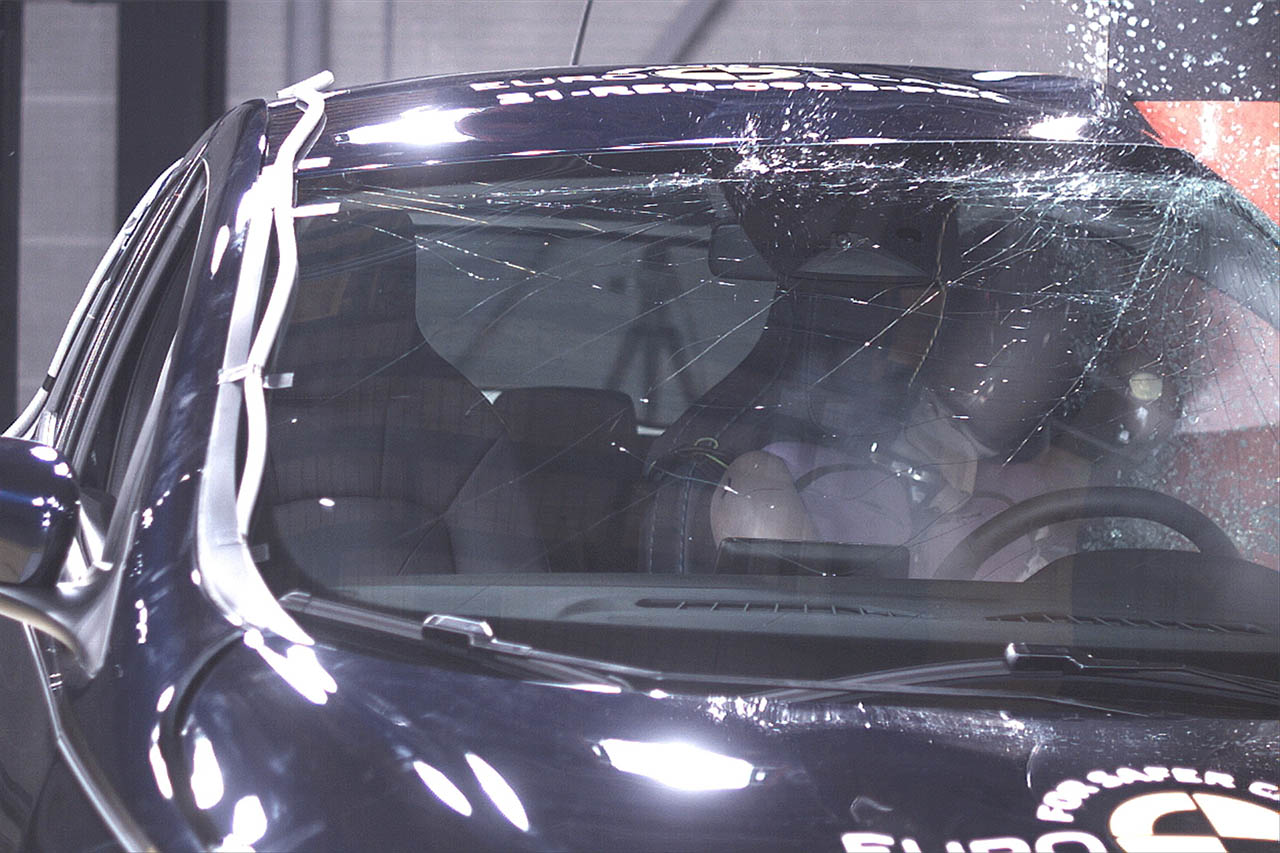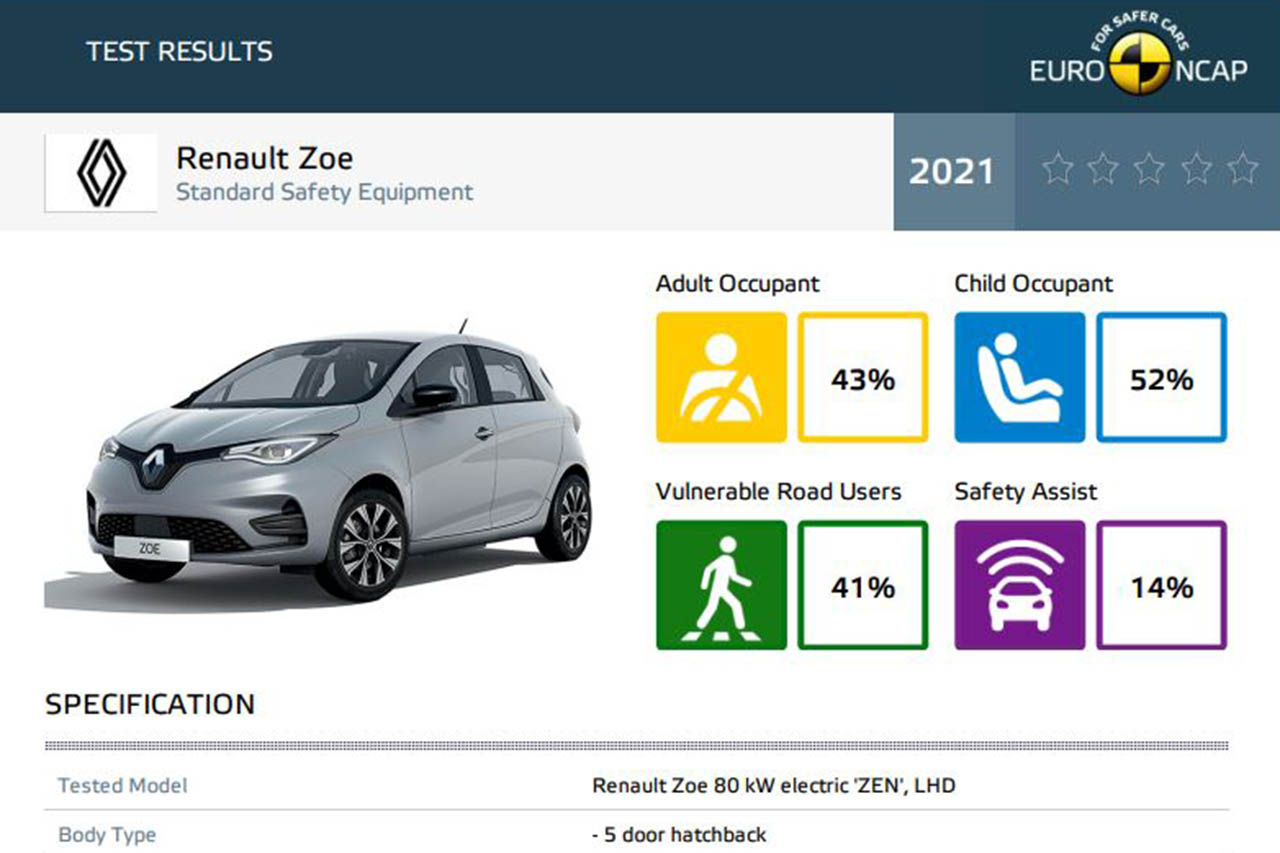
Euro NCAP has just published the results of the crash tests of 11 vehicles, including the Dacia Spring and the Renault Zoe. The two electric models of the Renault group were highly rated. The Romanian city woman leaves with one star, and the French one … zero. Why ? Lighting by L’argus.
A hard blow for the Renault group. He who has always surfed the EuroNCAP results to promote the excellent level of safety of his vehicles is disillusioned today. The European body in charge of crash tests gave poor marks to the Renault Zoe and the Dacia Spring. The city car with the diamond even gets a dotted zero. Why such a note? Argus make the point.
An “old” model on the test bench

Since 2013, the Renault city car remains technically the same vehicle. The 2019 Zoe tested by Euro NCAP is only the restyled version. On this date, it benefited from aesthetic changes, a new dashboard, an improvement in its autonomy and an adjustment of equipment, in particular at the level of driving aids. Developments that do not generally justify going through the crash-test box again. So why did the organization make this choice today? And why in 2021 when the model was released in the fall of 2019? To these questions, Euro NCAP replies that it was asked by one of its Swedish members (Trafik Verket) to test this vehicle, which is particularly popular in Europe. The organization adds that during the tests carried out in 2020 as part of the Green NCAP, where the Zoe obtained 5 stars for its environmental qualities, the experts noticed that a safety device had been removed from the vehicle: the head airbag, yet present from the beginning. It did not take more for the city car to go back to the test bench.
The post crash: fatal à la Zoe
While she had harvested 5 stars in 2013, the Zoe gets none with the 2020 protocol, which has undergone five changes in seven years! Among the new tests carried out: the post crash (side impact). In the absence of an airbag, the mannequin’s head struck this element. Euro NCAP judged that the absence of this device represented ” degradation of occupant protection Could cause death and therefore lowered the rating for adults accordingly. La Zoe only got 43% of the mark.

Furthermore, Euro NCAP justifies the poor record of the Zoe by the absence of automatic emergency braking in series. The AEB is part of the long list of equipment which is now required to be present in order to obtain an additional Euro NCAP star. However, the entry-level Life version is not fitted with it as standard, unlike the superior liveries. Therefore, the dotted zero would not be one with another finish. Small vehicles that do not always have them to display attractive prices are automatically penalized. In the chapter “driving aids”, the Zoe won only 14% of the note.
Finally, in the “protection of child occupants” category, the Zoe obtained 52% of the score and 41% in the “protection of vulnerable occupants” section.
Renault defends itself and announces changes
If Euro NCAP concludes that “ the new Zoe offers poor crash protection overall (…) and lacks meaningful safety technologies, disqualifying her for All Stars “, it did not become dangerous for all that! The increasingly stringent protocols requiring ever more complete equipment penalize certain vehicles.

For its part, Renault recalls that with ” the same equipment, a model can lose up to 2 stars for each protocol change “And therefore defends himself by reaffirming that” Zoe E-Tech Electric is a safe vehicle, which meets all regulatory safety standards “. The diamond manufacturer has already planned improvements for the Zoe MY 2022, which will be launched in early 2022. Among them, the series installation of the AEB on the base finish.
No small savings
At first glance, Renault’s decision would only be a matter of profitability. An easy and inaccurate shortcut according to one of our internal sources. What builder would voluntarily take the responsibility of playing with the lives of its customers? Moreover, this source recalls that Renault relies on the work of the LAB, accidentology laboratory created by Renault and PSA, and that it concludes that side accidents with a pole are extremely rare out of the 300,000 Zoe analyzed. Even more so on an urban vehicle. Note also that the crash with a pole did not exist at the time of the design of the Zoe (it appeared in 2016) and that its specificities have evolved several times since. And if the French manufacturer had wanted to save money, it would have done so on the most expensive equipment, namely driving aids.

A headlong rush as a backdrop
The case of the Renault Zoe shows that the race for the stars has gone to the dark side of the system because the rating varies mainly according to the myriad of driving aids which, with each change of protocol, sharply increases the price of vehicles. . But how far?

It is not about to stop since in 2022 will be launched the GSR2, which imposes the airbag between the two seats to get the holy grail. Like PSA, some manufacturers are protesting against this Diktat and choosing to no longer aim for 5 stars. This is what Peugeot did with the 208, which is not equipped with the high-tech camera on the basic version (4 stars). If Euro NCAP wanted to react to the discontent of the manufacturers, it would not have done it other than with this crash of the Renault Zoe. Moreover, the latter would not be the only one to win the donkey cap if the organization put to the test certain vehicles of older design. So, how many stars would the Fiat 500 obtain in 2021, which had already lost two between its launch in 2007 (5 stars) and its second test in 2017 (3 stars)? As the price of cars skyrockets, it might be time to get out of the way.

















